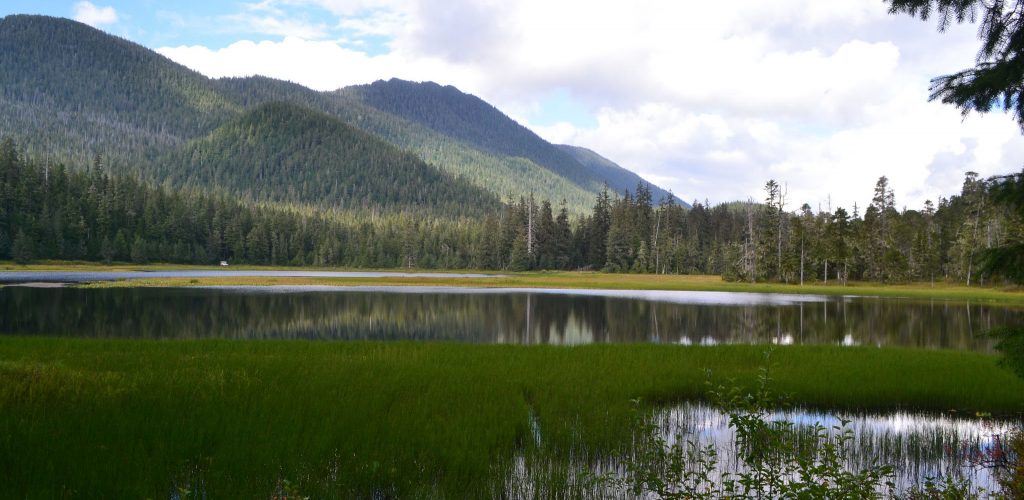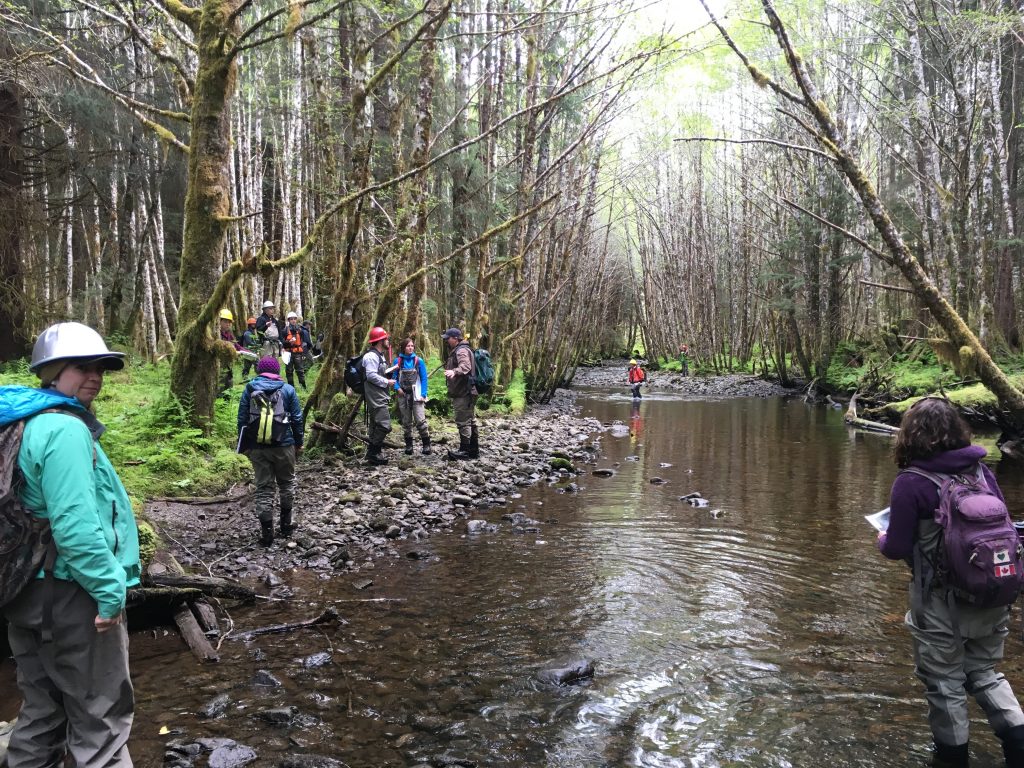
Our wetlands and waterways provide unparalleled services to humans and the environment. Well known for harboring amazing biodiversity, wetlands play a critical role in the water cycle by naturally filtering and regulating the flow of water, helping clean water, controlling flooding, and preventing drought in dryer climates. In much of the world, these “ecosystem services” have been undervalued. It is estimated that since 1900 approximately 64-71% of the world’s wetlands have been lost (Davidson, 2014), with the drivers of this decline coming from intensive agricultural production, urbanization, irrigation, pollution, etc. (TEEB, 2013). The loss has real consequence, not only for fish and wildlife but for the livelihoods and probability of businesses that can be affected by flooding, drought, and poor water quality.
Here in Southeast Alaska, we are lucky to have many intact wetlands and watersheds. Our strong salmon runs, for example, are testament to the value of clean naturally flowing watersheds and wetlands. Despite our many healthy watersheds, freshwater and tidal wetlands in Southeast Alaska are often at risk from development because they are flat areas that are easy to build on and our communities are often located near coasts and waterways. Now is the time to ensure we have the right policies and programs to ensure we don’t make the same mistake of degrading our wetlands and waterways.
Our Nation’s leaders have recognized the need to allow for critical development to occur while still valuing wetlands for the ecosystem services they provide. The Clean Water Act (Section 404) sets out a process that allows critical development to occur by “filling” wetlands and waterways, but requires developers to mitigate their unavoidable impacts through wetland restoration, creation, enhancement, or preservation. Over the last six years, the Southeast Alaska Watershed Coalition (SAWC) brought together government agencies, scientists, and community leaders to develop the Southeast Alaska Mitigation Fund, an “In Lieu Fee” mitigation program that offers compensatory mitigation to offset authorized impacts under the Clean Water Act Section 404 program. In September of this year, our Southeast Alaska Mitigation Fund received its final approval from the US Army Corps of Engineers.
This is an awesome achievement for SAWC, and we are excited for the implementation phase of the Mitigation Fund. The mitigation fund will open up resources to restore degraded wetlands and waterways and provide a tool to help ensure communities develop smartly. We are moving forward slowly and thoughtfully to ensure mitigation dollars for restoration are invested in high quality impactful projects that engage stakeholders and partners. SAWC is putting internal mechanisms in place and hopes to have an update on mitigation opportunities in spring of 2018.

SAWC would like to thank our partners and funders on this multiyear project that sought to advanced compensatory mitigation in Alaska. With special regards to, the Nature Conservancy- Alaska and Virginia, the US Fish and Wildlife Service, the US Forest Service, Environmental Protection Agency, Paul Adamus, the Southeast Alaska Land Trust, National Forest Foundation, and the Alaska Conservation Foundation.
For more information or questions please contact: Jessica Kayser Forster- SAMF Program Coordinator, jess.kayser@sawcak.org and/or Rob Cadmus-SAWC Executive Director, rob.cadmus@sawcak.org.
Davidson, Nick C. 2014. How much wetland has the world lost? Long-term and recent trends in global wetland area. Marine and Freshwater Research. 65(10) p.934-941
TEEB. 2013. The Economics of Ecosystem and Biodiversity for Water and Wetlands. Institute for European Environmental Policy (IEEP) & Ramsar Secretariat. http://www.ramsar.org/sites/default/files/documents/library/teeb_waterwetlands_report_2013.pdf
